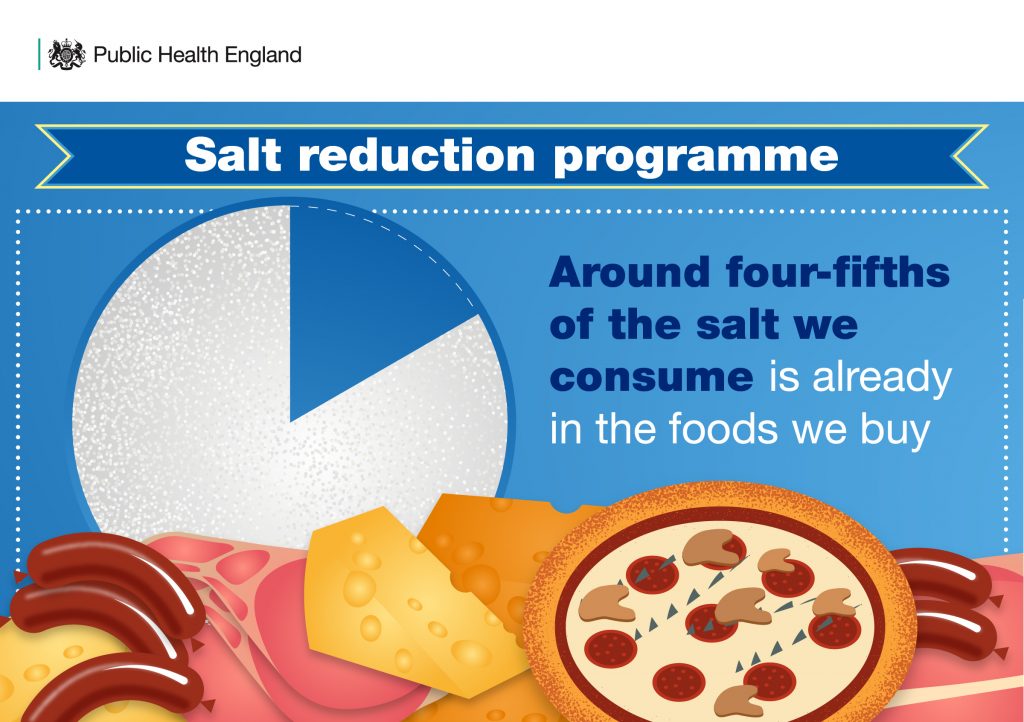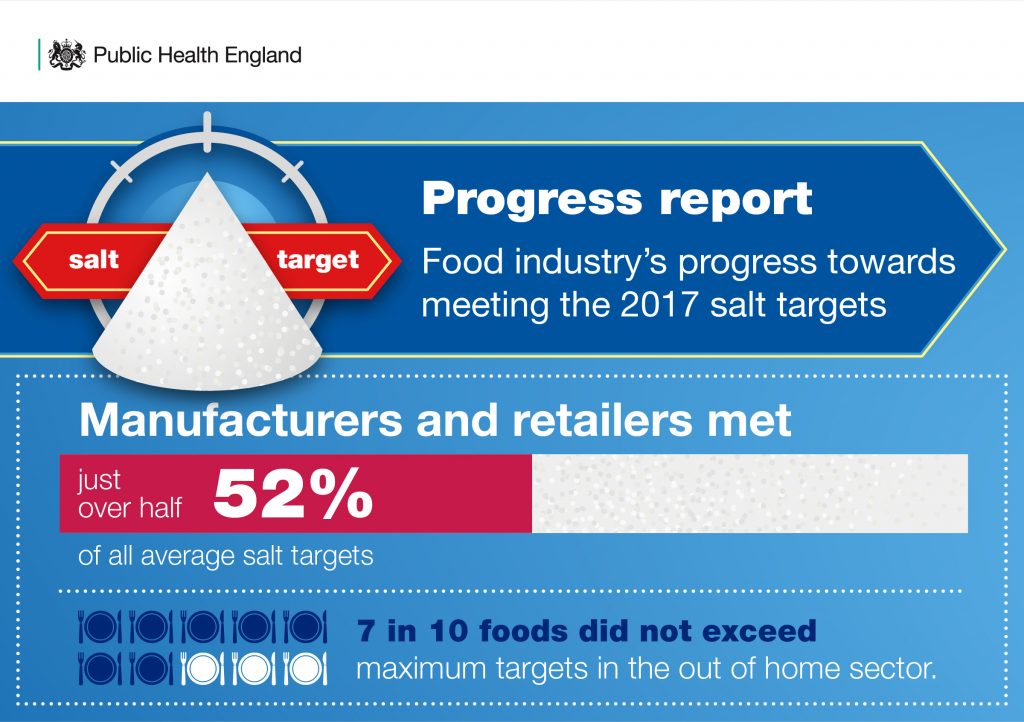Reducing salt to tackle preventable diseases

In 2003, the Scientific Advisory Committee on Nutrition (SACN) recommended that the average salt intake for adults should be no more than six grams per day, to reduce the risk of high blood pressure and hence cardiovascular disease.
This led to the government challenging the food industry with a series of salt reduction targets, covering around 80 food categories, alongside public awareness campaigns to help individuals make healthier choices. Since the first targets were set, the average salt intake in the UK has fallen by 11%.
Excess salt intake and its implications
We are consuming, on average, nearly two grams more salt per day than the recommended maximum amount.
Whilst this may not sound like a lot, if we can bring the population’s intake closer to the recommended six grams per day, it is estimated this would prevent thousands of premature deaths.
This is because excess salt intake can cause high blood pressure, often leading to cardiovascular disease (CVD), one of the main causes of premature death for adults in the UK.
What progress has been made to date?
Public Health England (PHE) has published its first in-depth analysis to assess whether the food and drink targets set in 2014, to be achieved by 2017, have been met by the food industry.
Despite some progress by the food industry, including manufacturers and retailers (the in-home sector), and the out-of-home sector (such as cafes, quick service restaurants and pub chains), the data shows there is much more to be done by those that produce and supply everyday foods.
Overall, our report shows that just over half of all average targets were met by retailers and manufacturers. It also shows that retailers performed better than manufacturers.

Performance of food categories varied considerably. Both manufacturers and retailers achieved some success, with the in-home sector overall meeting all average targets across 9 out of 28 food categories including breakfast cereals; butter and fat spreads; pizzas; and cakes. Salt levels are also within the maximum targets for 75% of products in these categories.
How about the out-of-home sector?
No single category had all products below the maximum target. For example, around half of the products in the burgers in a bun and pasta meals categories have salt levels above maximum targets. The pizza category, for example, has more than 75% of its products at or below the maximum target.
The data suggests that salt levels are generally higher in foods in the out-of-home sector compared with food from retailers and manufacturers, so they have a significant role to play in bringing down the nation’s salt intake.
Progress in the top sodium-contributing categories
Fifteen food sub-categories contribute about 75% of all salt from foods with salt reduction targets. In the in-home sector, the percentage of products at or below maximum targets in these sub-categories ranged from 54% for sausages to 99% for cheddar and other ‘hard pressed’ cheeses. For the out-of-home sector, the percentage ranged from 41% for bread to 91% for sweet biscuits.
Within these top sodium-contributing categories, the percentage of products with sodium levels above maximum targets was nearly always higher for the out-of-home sector, than for the in-home sector.
Salt reduction remains a public health priority
Salt reduction remains a public health priority, as we know that reducing dietary salt intake can lower blood pressure and contribute to a decrease in CVD. This work forms part of our wider food reduction programme which includes reducing sugar and calories in everyday foods.
We all have a role to play in improving the nation’s health, and the food industry can make a significant difference.
However, while some progress has been made, we clearly still have a long way to go.
from Public health matters http://bit.ly/2T64LrL





No comments